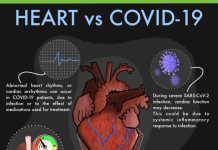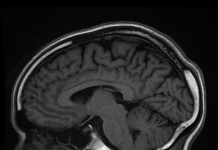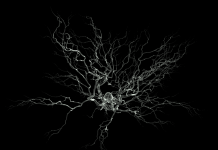Scientists from Stanford University have developed a prototype of auto-focusing eyeglasses which automatically focus on where the wearer is looking. It can help correct presbyopia, a gradual age-related loss of near vision faced by people of 45+ age group. Autofocals provide a more effective and accurate solution than traditional eyeglasses.
Around 1.2 billion people worldwide are currently affected by a naturally occurring age-related eye condition called presbyopia which starts to affects one’s near vision around the age of 45. As we age, the crystalline lenses in our eyes stiffen and lose the elasticity which is required to focus on nearby objects and thus due to presbyopia people struggle to view close objects in sharp focus.
Various eyeglasses and contact lenses are available for correcting presbyopia and people have to typically start using them after 40. The existing methods use fixed focal elements to approximate vision that would be comparable to what a crystalline lens would achieve in a healthy eye. However, these methods have many problems. The traditional reading eyeglasses are for one, cumbersome to carry as they need to be used or not used depending upon whether user is going to read. These eyeglasses are not much useful for other activities, for instance driving. The traditional progressive lenses of today require the wearer to align their head in the correct direction to be able to focus clearly and this alignment takes time. Since there is no or very little peripheral focus, this visual shift makes it very challenging and inconvenient for the wearer to focus during daily activities. Surgery is an option to reduce stiffness of lenses but it is an invasive procedure and its long-term reliability is not completely clear. Thus, an optimal solution for correcting presbyopia is not available.
In a new study published on June 29 in Science Advances, scientists have created a novel pair of experimental focus-tunable eyeglasses called ‘autofocals‘ for presbyopia correction. The autofocals consist of (a) electronically controlled liquid lenses (b) a wide field-of-view stereo depth camera, (c) binocular eye-tracking sensors and (d) a custom software which processes the information. The ‘autofocal’ system in these eyeglasses automatically adjusts the focal power of the liquid lenses based upon the input received from the eye trackers. i.e. what the wearer is looking at. They do this by mimicking the natural ‘autofocus’ mechanism of the healthy human eye. The fluid-filled lenses in the eyeglasses can expand or contract as the field of vision changes. Eye-tracking sensors pinpoint where a person is looking at and determine the precise distance. Finally, a custom software built by researchers processes eye-tracking data and makes sure that lenses are viewing the object with sharp-focus. The refocusing in autofocals is seen to be faster and more accurate compared to traditional eyeglasses.
Researchers tested the autofocals on 56 people with presbyopia. There was a marked improvement in visual task performance and the new prototype eyeglasses were ranked by majority users as a ‘preferred’ correction method. In another study involving 19 users, autofocals exhibited improved and better visual acuity and contrast sensitivity compared to conventional presbyopia methods. Authors aim to reduce size and weight of the prototype and make it lightweight and practical for everyday use.
The prototype eyeglasses ‘autofocals’ described in the current study uses the available lenses, available eye tracking technology and has created a software which can process the information and help to view close objects with sharp focus more accurately and efficiently than traditional eyeglasses. Autofocals will play an important role in near vision correction in the future.
***
{You may read the original research paper by clicking the DOI link given below in the list of cited source(s)}
Source(s)
Padmanaban N et al. 2019. Autofocals: Evaluating gaze-contingent eyeglasses for presbyopes. Science Advances, 5 (6). http://dx.doi.org/10.1126/sciadv.aav6187




































